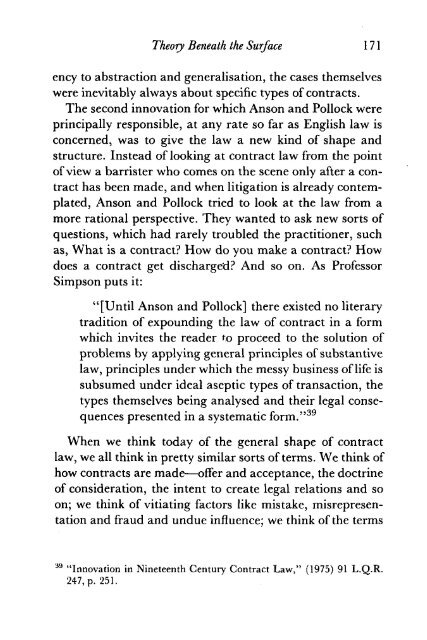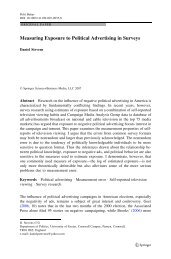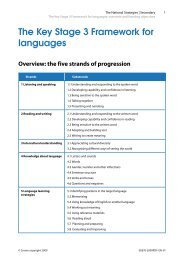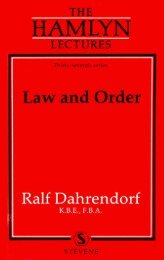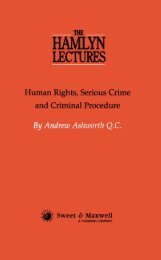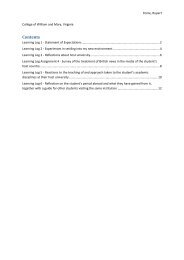Pragmatism and Theory in English Law - College of Social Sciences ...
Pragmatism and Theory in English Law - College of Social Sciences ...
Pragmatism and Theory in English Law - College of Social Sciences ...
You also want an ePaper? Increase the reach of your titles
YUMPU automatically turns print PDFs into web optimized ePapers that Google loves.
<strong>Theory</strong> Beneath the Surface 171<br />
ency to abstraction <strong>and</strong> generalisation, the cases themselves<br />
were <strong>in</strong>evitably always about specific types <strong>of</strong> contracts.<br />
The second <strong>in</strong>novation for which Anson <strong>and</strong> Pollock were<br />
pr<strong>in</strong>cipally responsible, at any rate so far as <strong>English</strong> law is<br />
concerned, was to give the law a new k<strong>in</strong>d <strong>of</strong> shape <strong>and</strong><br />
structure. Instead <strong>of</strong> look<strong>in</strong>g at contract law from the po<strong>in</strong>t<br />
<strong>of</strong> view a barrister who comes on the scene only after a contract<br />
has been made, <strong>and</strong> when litigation is already contemplated,<br />
Anson <strong>and</strong> Pollock tried to look at the law from a<br />
more rational perspective. They wanted to ask new sorts <strong>of</strong><br />
questions, which had rarely troubled the practitioner, such<br />
as, What is a contract? How do you make a contract? How<br />
does a contract get discharged? And so on. As Pr<strong>of</strong>essor<br />
Simpson puts it:<br />
"[Until Anson <strong>and</strong> Pollock] there existed no literary<br />
tradition <strong>of</strong> expound<strong>in</strong>g the law <strong>of</strong> contract <strong>in</strong> a form<br />
which <strong>in</strong>vites the reader to proceed to the solution <strong>of</strong><br />
problems by apply<strong>in</strong>g general pr<strong>in</strong>ciples <strong>of</strong> substantive<br />
law, pr<strong>in</strong>ciples under which the messy bus<strong>in</strong>ess <strong>of</strong> life is<br />
subsumed under ideal aseptic types <strong>of</strong> transaction, the<br />
types themselves be<strong>in</strong>g analysed <strong>and</strong> their legal consequences<br />
presented <strong>in</strong> a systematic form." 39<br />
When we th<strong>in</strong>k today <strong>of</strong> the general shape <strong>of</strong> contract<br />
law, we all th<strong>in</strong>k <strong>in</strong> pretty similar sorts <strong>of</strong> terms. We th<strong>in</strong>k <strong>of</strong><br />
how contracts are made—<strong>of</strong>fer <strong>and</strong> acceptance, the doctr<strong>in</strong>e<br />
<strong>of</strong> consideration, the <strong>in</strong>tent to create legal relations <strong>and</strong> so<br />
on; we th<strong>in</strong>k <strong>of</strong> vitiat<strong>in</strong>g factors like mistake, misrepresentation<br />
<strong>and</strong> fraud <strong>and</strong> undue <strong>in</strong>fluence; we th<strong>in</strong>k <strong>of</strong> the terms<br />
1 "Innovation <strong>in</strong> N<strong>in</strong>eteenth Century Contract <strong>Law</strong>," (1975) 91 L.Q.R.<br />
247, p. 251.


